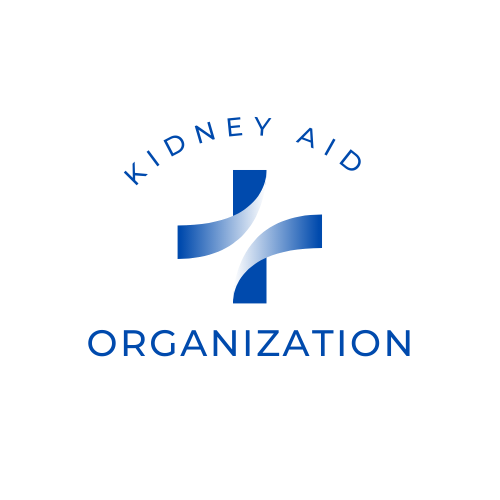Chronic kidney disease (CKD) is a significant health concern affecting millions of people worldwide. Understanding its prevalence is crucial for public health initiatives, patient care, and resource allocation. This article delves into the statistics surrounding CKD, exploring its prevalence, risk factors, and implications for healthcare systems and individuals.
The Scope of Chronic Kidney Disease
Chronic kidney disease encompasses a spectrum of kidney conditions characterized by the gradual loss of kidney function over time. According to the Centers for Disease Control and Prevention (CDC), approximately 15% of adults in the United States are estimated to have CKD. This staggering figure highlights the widespread impact of the disease on public health. Moreover, CKD often remains undiagnosed until its later stages, further complicating efforts to address its prevalence effectively.Risk Factors and Vulnerable Populations
Various factors contribute to the development of CKD, including diabetes, hypertension, obesity, and smoking. Individuals with a family history of kidney disease are also at an increased risk. Moreover, certain demographic groups, such as older adults, racial and ethnic minorities, and those with low socioeconomic status, are disproportionately affected by CKD. Addressing these disparities requires targeted interventions aimed at reducing risk factors and improving access to healthcare services among vulnerable populations.Global Perspectives on CKD Prevalence
Beyond the United States, CKD represents a global health challenge. The Global Burden of Disease Study reports that CKD is responsible for a significant burden of disability-adjusted life years (DALYs) worldwide. Regions with limited access to healthcare infrastructure, such as low- and middle-income countries, bear a disproportionate burden of CKD. This highlights the need for international collaboration and investment in preventive measures, early detection, and treatment strategies to mitigate the impact of CKD on a global scale.The Economic Burden of CKD
In addition to its human toll, CKD imposes a substantial economic burden on healthcare systems and societies. The costs associated with CKD management, including dialysis, transplantation, and supportive care, are considerable. Moreover, CKD often coexists with other chronic conditions, further exacerbating healthcare expenditures. By addressing CKD prevalence and its risk factors, policymakers can potentially alleviate the financial strain on healthcare systems and improve overall health outcomes for affected individuals.Strategies for Prevention and Management
Given the significant public health implications of CKD, preventive strategies play a crucial role in reducing its prevalence and impact. Lifestyle modifications, such as maintaining a healthy diet, engaging in regular physical activity, and managing chronic conditions like diabetes and hypertension, can help prevent the development or progression of CKD. Additionally, early detection through routine screening and monitoring of kidney function is essential for timely intervention and management of CKD.Empowering Patients Through Education and Awareness
Education and awareness campaigns aimed at promoting kidney health and disease prevention are integral components of CKD management strategies. By empowering individuals with knowledge about risk factors, symptoms, and available resources, healthcare providers can facilitate early detection and encourage proactive management of CKD. Furthermore, fostering partnerships between healthcare providers, community organizations, and patients can enhance support networks and promote adherence to treatment plans.Innovations in Healthcare Delivery
Advancements in healthcare technology and delivery models offer promising avenues for improving CKD care and outcomes. Telemedicine platforms, remote monitoring devices, and electronic health records enable more accessible and efficient healthcare delivery, particularly for individuals with limited mobility or access to traditional healthcare settings. Furthermore, integrated care models that coordinate various healthcare providers and services can streamline CKD management and enhance patient-centered care.The Role of Research and Innovation
Ongoing research efforts aimed at better understanding the pathophysiology of CKD and identifying novel therapeutic targets are essential for advancing CKD management and treatment options. From precision medicine approaches to regenerative therapies, emerging innovations hold the potential to revolutionize CKD care and improve long-term outcomes for affected individuals. By fostering interdisciplinary collaboration and investment in research infrastructure, stakeholders can accelerate the pace of discovery and translation into clinical practice.Conclusion
In conclusion, chronic kidney disease represents a significant public health challenge with far-reaching implications for individuals, healthcare systems, and societies. By understanding the prevalence of CKD and its associated risk factors, stakeholders can develop targeted interventions aimed at prevention, early detection, and management. Through education, awareness, and innovation, we can strive to mitigate the burden of CKD and improve the quality of life for affected individuals worldwide.Are you tired of living under the shadow of kidney disease? Are you yearning for a life free from the shackles of dialysis, kidney failure, and the looming threat of kidney transplants? If so, you're in the right place at the right time.
Imagine waking up every morning with boundless energy, feeling rejuvenated and ready to take on the day. Envision a life where your kidneys are functioning optimally, and you no longer dread the burdensome routines of dialysis sessions. The Kidney Disease Solution Program is here to turn that vision into reality for you.


